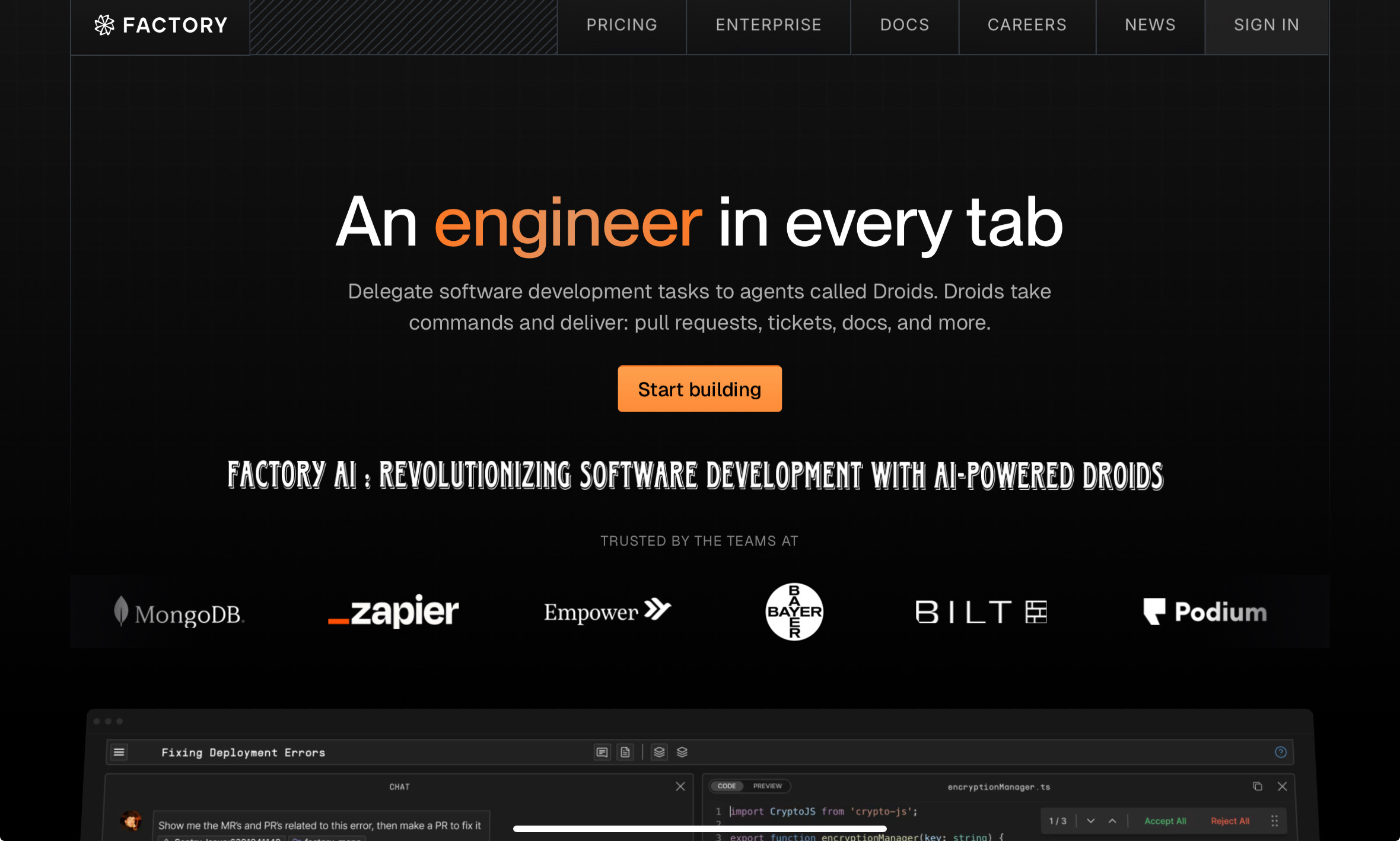Explore how this innovative AI tool is transforming the way applications are built.
Introduction
The world of software development is constantly evolving, and a new AI tool called Factory is making waves with its innovative approach to building applications. Unlike traditional methods that tackle large problems head-on, Factory breaks down the development process into smaller, manageable parts, assigning different responsibilities to specialized AI agents called droids. This modular, team-like structure closely mirrors real-world software development workflows, making it a genuinely impressive platform.
The Droid Ecosystem: Specialized Agents for Every Task
Factory’s core strength lies in its droid ecosystem. Each droid is a small, independent AI agent specializing in a specific task. They work collaboratively, transferring data and carrying out real-world development operations. Currently, there are five droids available, each with a distinct role:
- Tutorial Droid: Guides users through the platform, providing step-by-step instructions for new users.
- Code Droid: Responsible for writing and generating code.
- Product Droid: Manages the product perspective, ensuring the developed software meets product requirements and delivers a solid user experience.
- Reliability Droid: Focuses on improving the overall stability and security of the application.
- Knowledge Droid: Handles documentation, provides technical explanations, and assists with external documentation needs.
A Glimpse into the Development Workflow
Factory’s workflow is designed to be intuitive and efficient. Let’s walk through an example of how it operates:
Connecting to Your Environment
To begin coding, Factory requires a connection to a development environment. Users can choose to connect to a remote machine, a remote workspace, or even their local machine. This is facilitated by the Factory Bridge application, a local app that allows Factory to execute commands on your system. A unique code is provided, which you paste into the Factory Bridge app to establish a secure connection. Factory also offers granular control over command execution, allowing users to select which commands can be auto-executed and even displaying potential risks before running any command.
Building a Native Desktop Application
In a recent demonstration, Factory showcased its ability to build a native desktop ChatGPT application using Tauri, a framework that leverages Rust and TypeScript. This highlights Factory’s capability to go beyond web applications and create robust, native software.
The process unfolded seamlessly:
- Factory first checked for Rust installation and then cloned a tutorial repository containing a pre-configured template.
- It then proceeded to install dependencies and set up the environment.
- After the initial setup, Factory successfully launched a basic starter template of the application.
- The Code Droid then took over, reading the TypeScript file and implementing a simple counter feature to demonstrate direct state management.
Customizing and Integrating APIs
One of the most impressive aspects of Factory is its ability to facilitate the creation of complex applications with external API integrations. Instead of simple to-do lists, Factory offers options like:
- LLM Chat Application: Requires an OpenAI API key.
- Code Review Tool: Likely integrates with code hosting platforms.
- Meeting Notes Summarizer: Would depend on third-party APIs for transcription or summarization.
This is where the Knowledge Droid proves invaluable, gathering information about APIs and assisting with their integration.
In the demonstration, the LLM chat application was chosen. Factory quickly built the application and guided the user to obtain an OpenAI API key. The application’s settings panel allowed for configuring various parameters like models, temperature, max tokens, and system prompts, fully leveraging OpenAI’s API capabilities.
Debugging and the Future of Software Development
Even with advanced AI tools, issues can arise. During the demo, the LLM chat application encountered a problem with inconsistent responses. Factory, leveraging its debugging capabilities, helped resolve the issue. It was discovered that the problem was not with the application itself, but a temporary incompatibility or issue with a specific model selected from OpenAI. This highlights Factory’s ability to assist in diagnosing and fixing problems, even those stemming from external dependencies.
Factory’s structured workflow, modular design, and team-like approach to development genuinely feel like a glimpse into the future of software creation. By breaking down complex tasks into specialized roles and providing intuitive control over the development process, Factory has the potential to transform how software is built.



